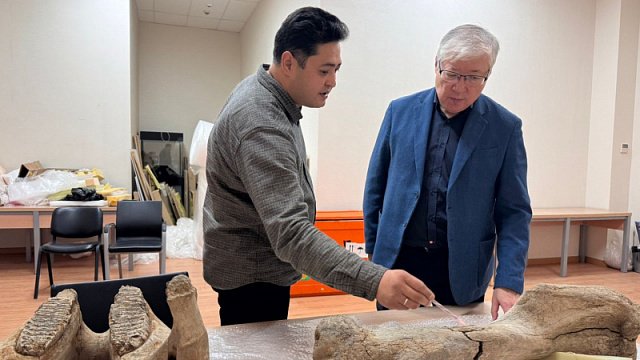
The lower jaw and bone of a woolly mammoth have been discovered in Kazakhstan’s Akmola Region. This was reported by the
Kazinform, a partner of TV BRICS, citing the National Museum of Kazakhstan.
According to preliminary analysis, the remains belong to an animal aged approximately 40–50 years that lived around 40–15 thousand years ago.
Experts believe that a complete skeleton may have been preserved at the site of the discovery. The
museum noted that a scientific team plans to conduct systematic archaeological and palaeontological excavations in the area next season. If the assumption is confirmed, it will become an important discovery in studying the fauna of the Ice Age in the republic.
As explained by the museum, this species of mammoth appeared about 700 thousand years ago, and its last representatives became extinct roughly 10 thousand years ago. Small populations may have survived until as late as 2000 BC on the northern islands of Siberia. The animals reached a height of 3–4 metres and a weight of 5–6 tonnes. A thick layer of subcutaneous fat and dense fur helped them survive harsh climatic conditions.
In September, Kazinform reported that near the village of Baiterek, a local resident
discovered a shinbone of an extinct animal over one metre long while fishing. It is believed that the mammal inhabited this area about 15 thousand years ago.
Scientists from different BRICS countries continue to make archaeological discoveries. In August,
China Daily, a TV BRICS partner, published a report about the discovery of a new dinosaur species in China. The fossils were found back in 2020, and after five years of study, experts confirmed that it is the oldest known sauropodomorph in East Asia – a group of dinosaurs that includes the largest herbivorous species.
Photo:
National Museum of the Republic of Kazakhstan
Самые
актуальные новости стран БРИКС https://tvbrics.com

